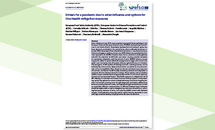Drivers for a pandemic due to avian influenza and options for One Health mitigation measures
Avian influenza viruses (AIV) remain prevalent among wild bird populations in the European Union and European Economic Area (EU/EEA), leading to significant illness in and death of birds.
Executive Summary
Transmission between bird and mammal species has been observed, particularly in fur animal farms, where outbreaks have been re- ported. While transmission from infected birds to humans is rare, there have been instances of exposure to these viruses since 2020 without any symptomatic infections reported in the EU/EEA. However, these viruses continue to evolve globally, and with the migration of wild birds, new strains carrying potential mutations for mammalian adaptation could be selected. If avian A(H5N1) influenza viruses acquire the ability to spread efficiently among humans, large-scale transmission could occur due to the lack of immune defences against H5 viruses in humans. The emergence of AIV capable of infecting mammals, including humans, can be facilitated by various drivers. Some intrinsic drivers are related to virus characteristics or host susceptibility. Other drivers are extrinsic and may increase exposure of mammals and humans to AIV thereby stimulating mutation and adaptation to mammals. Extrinsic drivers include the ecology of host species, such as including wildlife, human activities like farming practices and the use of natural resources, climatic and environmental factors. One Health measures to mitigate the risk of AIV adapting to mammals and humans focus on limiting exposure and prevent- ing spread. Key options for actions include enhancing surveillance targeting hu- mans and animals, ensuring access to rapid diagnostics, promoting collaboration between animal and human sectors, and considering the implementation of preventive measures such as vaccination of poultry. Effective communication to different involved target audiences should be emphasised, as well as strengthening veterinary infrastructure, enforcing biosecurity measures at farms, and reducing wildlife contact with domestic animals. Careful planning of poultry and fur animal farming, especially in areas with high waterfowl density, is highlighted for effective risk reduction.
Download








